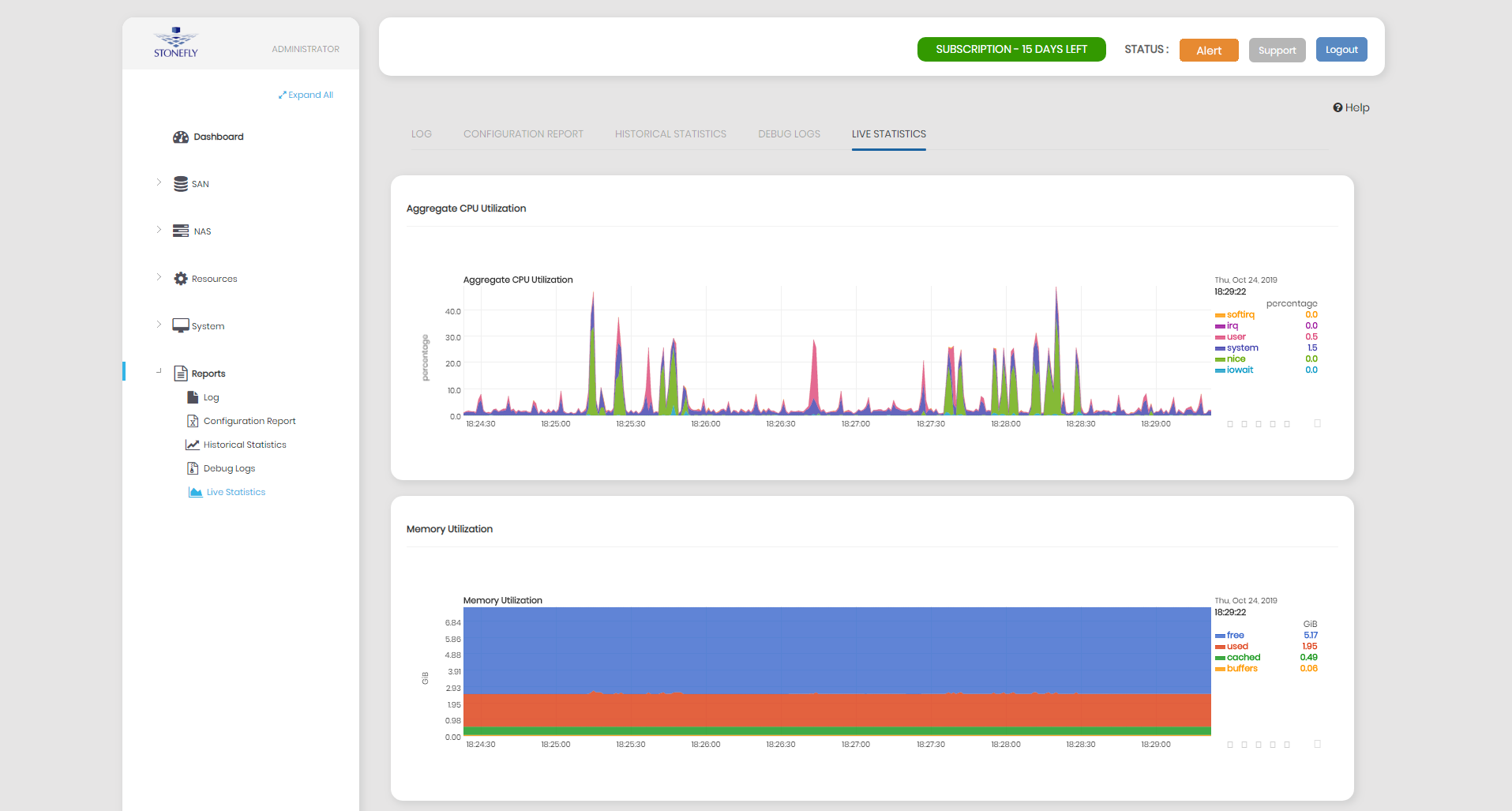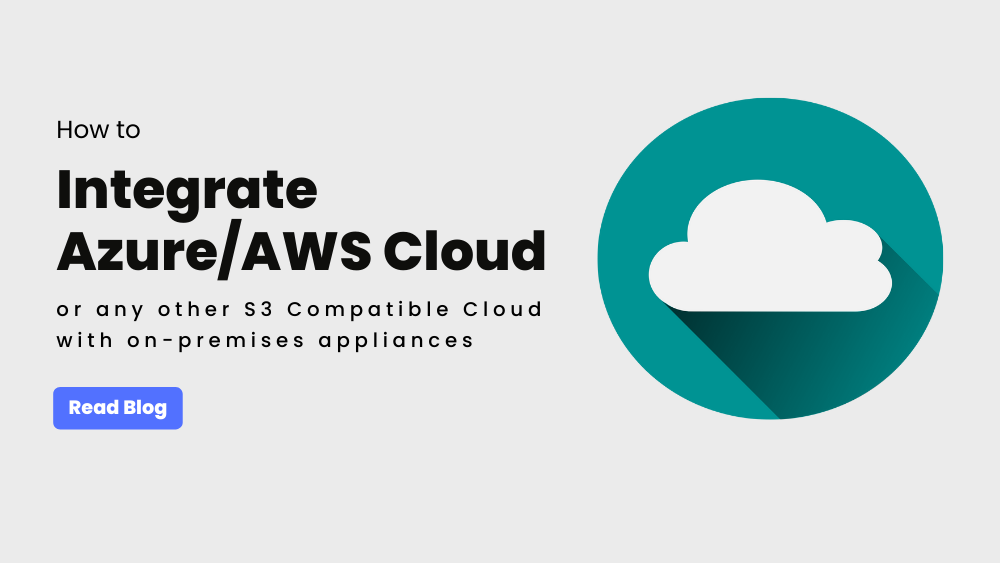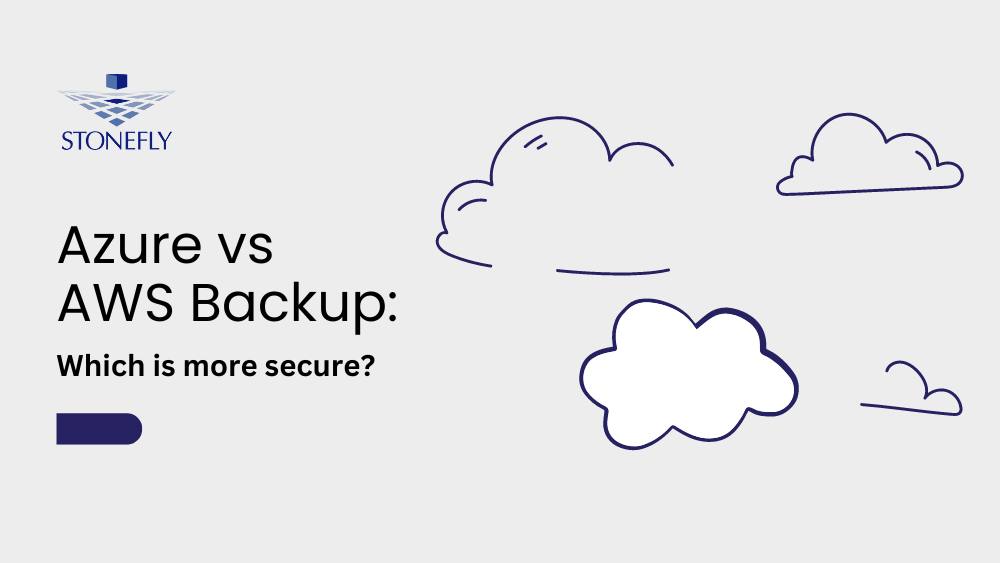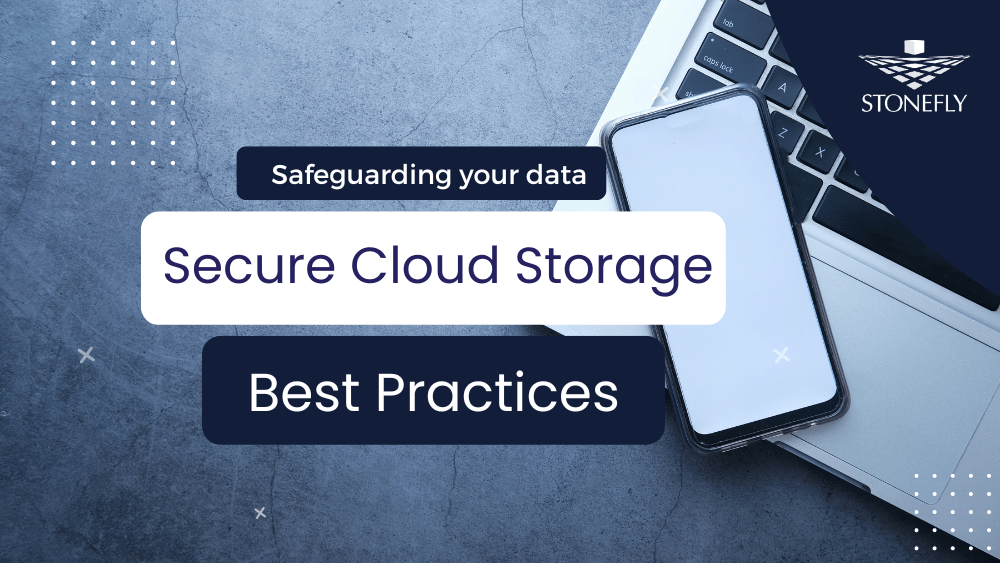The hybrid work model is becoming a more permanent scene. As a result, companies are looking to combine the cloud services they purchased recently for work from home and combine it with their on-premises data centers; in turn building a hybrid cloud infrastructure.
Statista estimates that approximately 50% of corporate data is stored in the cloud – and this volume will continue to grow as cloud adoption increases. However, for most companies, putting all their critical applications and running the entire IT infrastructure in the cloud isn’t practical. Hybrid cloud architecture gives them the options they need to build an IT infrastructure that accommodates compliance, security, and other business needs.
In this blog post, we take a closer look at hybrid cloud, its benefits, why should you implement it, and how to do so using your existing infrastructure.
What is hybrid cloud?
Hybrid cloud computing combines on-premises and public/private cloud repositories in a unified environment.
The architecture enables companies to leverage high performance on-premises capabilities while using scalable and affordable cloud repositories for offsite data storage and archiving.
Most modern day workloads make use of virtualization and containerization isolating environments while using the same OS and/or host, the hybrid cloud architecture makes it easier for IT administrators to allocate appropriate resources. The on-premises data center caters to the hot-tier and performance-intensive workloads while public cloud provides long term compliant storage resources.
Why should you implement a hybrid cloud architecture?
Hybrid cloud architecture enables companies to use what they already had (on-premises data center) and combine it with what they may have recently adopted (cloud). As a result, the hybrid cloud architecture saves money and simplifies management by unifying different environments.
In addition to facilitating a hybrid workplace, the integrated cloud technology allows IT administrators to:
- Offload cold and older data to affordable cloud tiers.
- Add storage capacity and/or performance capabilities dynamically by leveraging public cloud or private cloud resources.
- Deploy and manage microservices from home offices.
- Store backup copies offsite in public or private cloud repositories and set up backup strategies such as 3-2-1, 3-2-1-1-0, or 4-3-2. (Recommended: Use air-gapped backup in the cloud)
Benefits of Using a Hybrid Cloud Architecture
The integrated cloud technology helps companies manage workloads, reduce expenses and simplifies management. Hybrid clouds are becoming the platform of choice for many modern day applications – which is why it’s important to understand what hybrid cloud can do for your business.
Here are some key benefits of a hybrid cloud architecture:
Reduced costs: Public/private clouds provide enhanced services at a reduced cost. Hybrid cloud infrastructure enables companies to move the most performance-intensive workloads to on-premises data centers while using public or private clouds for less critical needs.
Flexible resources: Hybrid architecture provides dynamic resource allocation across different platforms based on application requirement and business demand.
Centralized management: Hybrid clouds provide a centralized management platform for all critical workloads, providing the flexibility of implementing on-premises applications as well as cloud-based applications. Hybrid clouds offer a single management interface for administrators to manage workloads, users and security across different platforms.
On-demand Scalability: Start small and scale storage capacity and performance as data grows. The hybrid architecture enables IT administrators to add on-premises resources without forklift upgrades and public or private cloud resources with just a few clicks.
Compliance: Hybrid cloud computing offers an improved level of compliance and data protection because it allows companies to move their more sensitive workloads (ePHI, PCI) onto on-premises air-gapped nodes or air-gapped repositories in public or private cloud.
How to implement a hybrid cloud architecture
The following components are needed to build a hybrid cloud architecture:
- On-premises data center: IT infrastructure that may contain Network Attached Storage (NAS), Storage Area Network (SAN), S3 object storage, backup server(s), etc.
- Infrastructure as a service (IaaS): Public cloud services such as Microsoft Azure, Amazon Web Services (AWS), etc.
- Network and bandwidth: A fast and reliable connection that can handle data transfers without bottlenecks and delays.
- Cloud storage gateway: Physical or virtual cloud gateway appliance that connects your on-premises data center to the desired public cloud repositories.
How to develop a hybrid cloud strategy
An effective hybrid cloud strategy takes into account:
- The applications and databases the company’s running and day-to-day operations rely on.
- The volume of hot, cool, and archive tier data – and how it’s distributed.
- Present and future resource capacity needs.
- User activity and data accessibility – ensure bottlenecks are prevented.
By analyzing the company’s workloads and priorities, IT administrators can effectively design a hybrid cloud model that guarantees smooth operations and cost savings.
For the most part, developing a hybrid cloud strategy involves anticipating challenges and making sure that they’re avoided.
A hybrid architecture enables companies to build a distributed environment; which means different workloads can be hosted on different platforms and different operating systems. It’s likely that the backend is separated from the frontend – which can potentially lead to bottlenecks or delayed responses. An effective strategy prevents that from happening.
Cloud security needs to be an integral part of the hybrid cloud strategy. Both the on-premises infrastructure and cloud data storage repositories should be secured using features such as air-gapping, encryption, Write-Once Read-Many (WORM), immutable snapshots, etc. Furthermore, in addition to protecting data at rest, adequate services and security measures need to put in place to protect data in transit.
How to manage a hybrid cloud environment
As with any IT infrastructure environment, as hybrid cloud environments grow, by adding data center nodes or cloud services, management becomes difficult. Furthermore, as different components are spread across different platforms, it becomes increasingly challenging to manage them.
Compared to the on-premises components, integrated cloud environments provide a lesser degree of control. However, this doesn’t necessarily have to be a bad thing. The Cloud Service Provider (CSP) takes care of the maintenance tasks while you leverage flexible, scalable, and compliant offsite data storage infrastructure.
Furthermore, by setting up policies, guidelines, and proper access controls, your IT administrators can maintain the necessary degree of control over integrated cloud solution(s) to satisfy business requirements and compliance needs.
Additionally, using cloud management with automation features also help simplify data management of hybrid cloud environments.
Another helpful feature to look for is a dashboard that provides real-time reporting for resource consumption. A good example of this feature is the dashboard of StoneFly SCVM™.

Hybrid Cloud versus Multi-Cloud Hybrid
Hybrid Cloud Hybrid clouds are built using on premises infrastructure components combined with public cloud service(s). Hybrid clouds provide the best of both worlds: cost-efficiency and scalability.
Multi-Cloud is a technique to use multiple public and/or private clouds simultaneously in order to solve different business problems such as availability, consistency, security and compliance needs.
Summary
Hybrid cloud combines the benefits of high performance on-premises infrastructure with the scalability of cloud services.
By using hybrid cloud architecture, companies can:
- Reduce data storage costs.
- Scale on-demand – without disruption or delay.
- Set up high performance and capacity storage tiers and automate data transfers between them.
- Store sensitive data in highly secure and compliant cloud storage volumes.
To implement a hybrid cloud infrastructure, you will need:
- On-premises data center.
- Cloud solutions.
- Reliable network speed and bandwidth.
- Cloud storage gateway.
In order to develop an effective hybrid cloud strategy, IT administrators need to account for:
- Critical applications and how they’re distributed across different platforms and hosts.
- Data volume of hot, cold, and archival data.
- User activity – to prevent bottlenecks and ensure data availability.
- Data security of critical workloads – at rest and in transit.
Managing a hybrid cloud can be difficult as different components are distributed across different platforms. In order to simplify data management, companies can use software that automate routine tasks, helps set guidelines to maintain the necessary degree of control, and provides a dashboard to keep track of resource consumption.
Looking to set up hybrid cloud environment(s) for your business workloads? We can help! Contact our experts today to discuss your projects.










